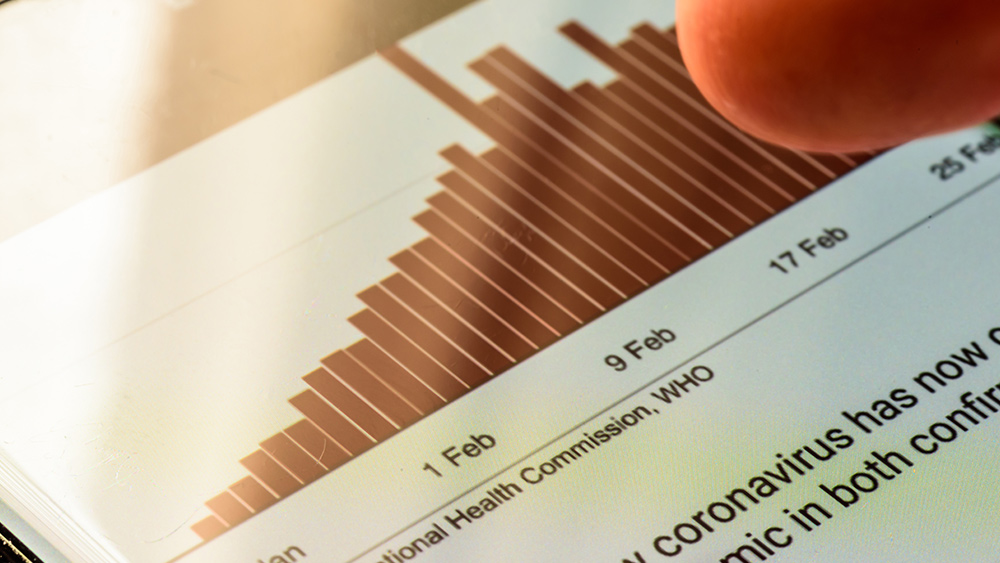World Bank commits $12 billion in aid for countries hit by coronavirus, but experts are bracing for a global recession
03/06/2020 / By Ralph Flores

The World Bank on Tuesday has committed $12 billion in aid to help countries with the health and economic impacts of the global coronavirus (COVID-19) outbreak. The emergency aid package will include low-cost loans, grants and technical assistance, and is designed to provide a fast and reliable response for developing countries, especially those that are most risk from the coronavirus spread. In a statement, the World Bank said that the poorest and most at-risk countries will be prioritized in distributing the aid.
“Through this new fast track package, the World Bank Group will help developing countries strengthen health systems, including better access to health services to safeguard people from the epidemic, strengthen disease surveillance, bolster public health interventions, and work with the private sector to reduce the impact on economies,” the organization added. “This financing is designed to help member countries take effective action to respond to and, where possible, lessen the tragic impacts posed by the COVID-19.”
Most of the $12 billion aid package will either come from previously available funds, or will come from the bank’s International Finance Corporation, a global development institution under the World Bank that works with the private sector to create markets in developing countries.
The World Bank has identified the countries that are most vulnerable to the coronavirus outbreak, including Sri Lanka, Vietnam and the Philippines, given their weak health systems, limited financial resources and close economic ties with China.
As of Thursday, the World Health Organization reports over 95,000 cases of the coronavirus (COVID-19) worldwide, of which more than 80,000 are in China. Five countries have reported their first cases of COVID-19 infections in the past 24 hours, including Bosnia and Herzegovina, Gibraltar, Hungary, Slovenia and the occupied Palestinian territory.
China has reported a decline in new infections and deaths in recent weeks, mainly due to draconian lockdowns placed in Hubei province, the epicenter of the global outbreak, and other key cities. Currently, the number of new daily infections overseas exceed new cases in the country. On the other hand, South Korea remains to be the worst-hit country outside China, adding 760 new infections on Thursday.
“The point is to move fast; speed is needed to save lives,” said World Bank President David Malpass, in a conference with reporters. “There are scenarios where much more resources may be required. We’ll adapt our approach and resources as needed.”
Global recession looming
Earlier this week, the Federal Reserve slashed interest rates by 0.5 percent in a rare emergency move to protect the economy from the impact of the coronavirus – its biggest cut since the 2008 global financial crisis. Stock prices temporarily rallied after the Fed’s announcement, but ultimately sank. On Thursday, both the S&P 500 and Nasdaq closed in the red at -3.39 and -3.10 percent, respectively.
The Organization for Economic Cooperation and Development also warned that the current outbreak can halve global economic growth this year. In an economic update released on Monday, the group lowered its central growth forecast from 2.9 to 2.4 percent, but noted that a drawn-out coronavirus outbreak – in particular, throughout the Asia-Pacific region, Europe and North America – could sink it even further to 1.5 percent this year. It noted, however, that the global economy can still recover to 3.3 percent growth – provided new cases continue to decline in China and other outbreaks are mild and contained. (Related: Global shippers now losing a billion dollars a month as pandemic-induced slump hits the world’s product transport infrastructure.)
“The main message from this downside scenario is that it would put many countries into a recession, which is why we are urging measures to be taken in the affected areas as quickly as possible,” said OECD chief economist Laurence Boone.
In China, officials are mulling a cut to its economic targets, as economists have already dented its target six-percent growth this year. Bloomberg Economics has tempered its expected GDP growth for the first quarter of 2020 to 4.5 percent, while JPMorgan has slashed its first-quarter expectations to 4.9 percent. The latter noted that the tourism, transportation, offline retail and entertainment industries will be affected by the downturn. This week, factories across the country have started to open after being idled since the Lunar New Year.
Sources include:
WHO.int [PDF]
Tagged Under: Collapse, coronavirus, covid-19, debts, economic collapse, economics, finance, finances, financial collapse, financial crisis, global debt, global economy, market crash, market outlook, outbreak, pandemic, recession, risk, SHTF, stock market, World Bank
RECENT NEWS & ARTICLES
Pandemic.News is a fact-based public education website published by Pandemic News Features, LLC.
All content copyright © 2018 by Pandemic News Features, LLC.
Contact Us with Tips or Corrections
All trademarks, registered trademarks and servicemarks mentioned on this site are the property of their respective owners.





















